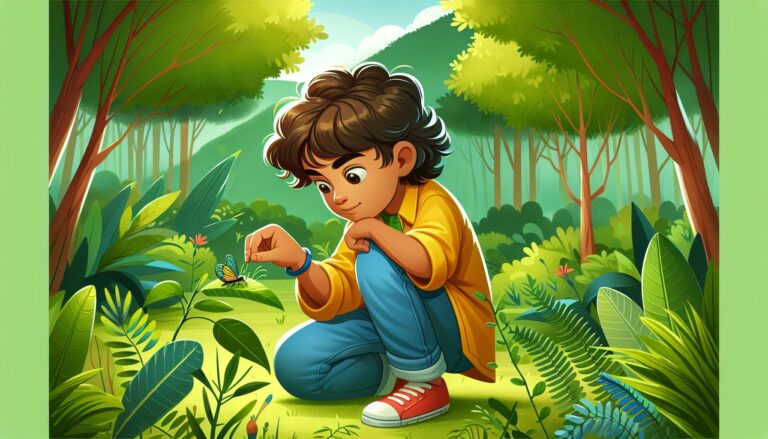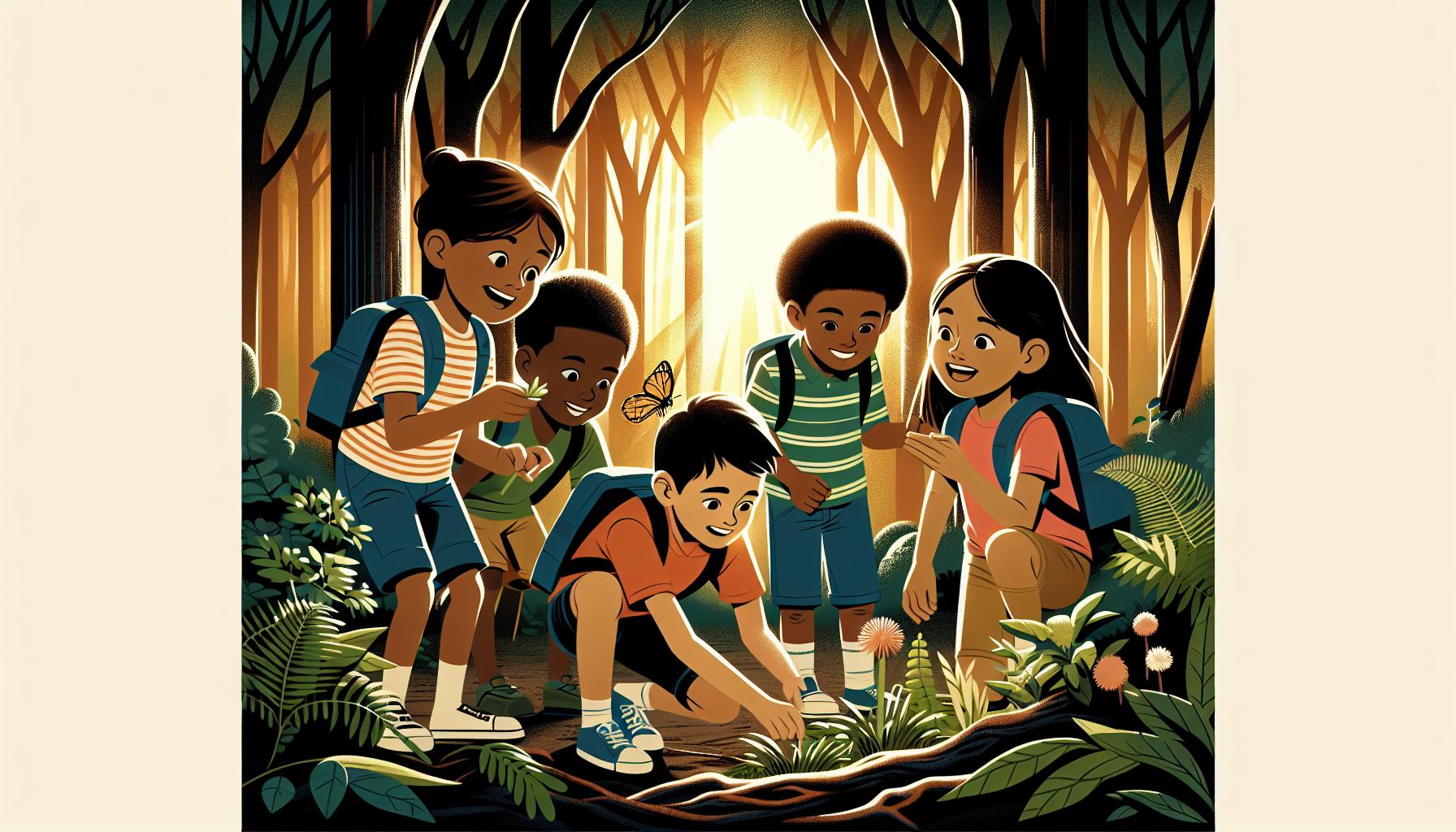
Key Takeaways
- Homeschooling nature activities provide hands-on learning opportunities that foster critical thinking, creativity, and problem-solving skills.
- Outdoor experiences, such as nature walks, gardening, and wildlife observation, promote physical health, emotional development, and an appreciation for the environment.
- Integrating nature-based activities with subjects like science, art, and math enhances knowledge retention and makes abstract concepts more tangible.
- Tools such as field guides, interactive apps, and nature kits can enrich outdoor learning while making it engaging and fun.
- Customizing activities based on children’s interests and encouraging journaling or reflective discussions deepen their connection to nature and learning.
- Nature activities help nurture environmentally-conscious habits, fostering responsibility and empathy toward sustainability.
Nature offers us an incredible classroom, filled with endless opportunities to learn, explore, and grow. For those of us homeschooling, incorporating outdoor activities can transform education into an adventure. Have you ever wondered how a simple walk in the woods or a hands-on project outside could spark curiosity and deepen understanding?
By blending learning with nature, we create moments that go beyond textbooks. From observing wildlife to experimenting with natural elements, these experiences help build critical thinking and creativity. Plus, they encourage kids to connect with the environment in meaningful ways. How can we make the most of these outdoor lessons while keeping them engaging and educational?
Let’s explore how nature-based activities can enrich our homeschooling journey, offering fresh perspectives and fostering a love for learning. Together, we can inspire curiosity and make education a truly immersive experience.
Benefits Of Homeschooling Nature Activities
Homeschooling nature activities offer practical learning opportunities. These activities let children experience real-world problems, fostering essential skills like problem-solving and adaptability. Engaging with natural settings builds situational awareness and improves decision-making. For example, identifying plants during a hike can strengthen observation and critical thinking.
Spending time outdoors promotes better health. Exposure to sunlight boosts Vitamin D levels, improving bone health and mood. Physical activities like gardening or nature walks encourage exercise, benefiting cardiovascular health and reducing stress. Research shows that time in green spaces improves mental well-being and concentration in children.
Nature activities enhance emotional and social development. Working together on projects, such as planting a flower bed, fosters collaboration and teamwork. Engaging with wildlife or natural habitats cultivates empathy and a sense of responsibility toward the environment. These experiences nurture emotional intelligence and communication skills.
Integrating nature into learning deepens knowledge retention. Lessons tied to hands-on experiences, like measuring tree heights or tracking animal footprints, create vivid memories. This approach turns abstract concepts into tangible insights, helping students grasp complex topics with ease. How could more immersive learning experiences benefit your homeschool routine?
Through these activities, children gain a connection to the environment. Direct interactions with nature instill a long-term appreciation for its value. This bond influences habits and choices, shaping environmentally-conscious individuals who care deeply about sustainability.
Popular Types Of Homeschooling Nature Activities

Outdoor learning offers endless opportunities for education and connection. By exploring different activities, we can create engaging, meaningful experiences for children that foster growth and discovery.
Nature Walks And Exploration
Exploring trails, parks, or nearby woodlands introduces children to diverse ecosystems. They can identify plants, observe wildlife, or collect leaves and rocks. These walks encourage curiosity, physical activity, and hands-on learning. What local areas provide interesting spots for exploration? Encourage children to document findings in nature journals, creating a record of their observations.
Gardening And Plant Studies
Planting seeds, tending plants, and harvesting teach patience and responsibility. Children can study life cycles, soil health, and weather’s impact on growth. Even small container gardens offer engaging ways to learn. Have you considered incorporating experiments, like testing how sunlight affects plant health or exploring composting techniques, into gardening lessons?
Wildlife Observation And Conservation
Spending time watching birds, insects, and small animals helps children understand biodiversity. Creating bird feeders or butterfly gardens can attract species for closer study. Discussions on habitats and conservation deepen ecological awareness. How can you involve your children in community-based conservation efforts or citizen science projects to extend their learning?
How To Incorporate Nature Activities Into Homeschooling

Integrating nature activities into homeschooling can provide endless opportunities for hands-on learning and personal growth. With thoughtful preparation and a sense of curiosity, this approach enhances both education and engagement.
Planning And Scheduling
Organize nature activities by aligning them with your homeschool curriculum. For example, if the lesson involves ecosystems, plan a visit to a nearby forest or wetland. Create a weekly or monthly schedule to dedicate specific days to outdoor learning. Build flexibility into your plans to allow time for curiosity-driven exploration. How can you incorporate seasons or weather changes into your planning?
Set realistic goals for each activity. For instance, during a nature walk, focus on observing plant species or identifying animal tracks. Tracking milestones helps maintain educational progress while keeping activities enjoyable.
Using Local Resources And Parks
Leverage local resources like nature centers, botanical gardens, and state parks for immersive lessons. Many of these locations offer educational programs or guides that support learning objectives. Have you checked what nature-based opportunities are available in your area?
Local parks provide easily accessible spaces for activities like birdwatching, nature journaling, or scavenger hunts. Research types of parks—such as those with diverse ecosystems or well-maintained trails—that align with your goals. Partner with local conservation groups to introduce your children to community projects like habitat restoration or clean-up events.
Integrating Science And Art
Science and art complement each other beautifully in nature-based learning. Use outdoor settings to teach subjects like biology and physics. Analyzing soil samples, studying photosynthesis, or measuring tree heights are simple ways to include science. Do you encourage your children to ask questions and investigate their surroundings?
Incorporate art by having children sketch landscapes, paint leaves, or create nature collages. Encourage creativity by emphasizing personal expression over perfection. Combine both disciplines by documenting science observations through drawings or photography. These activities promote a deeper connection to the natural world while enriching understanding.
Tools And Resources For Homeschooling Nature Activities
Incorporating the right tools can simplify and enrich homeschooling nature activities. With the right resources, we can create educational experiences that are both fun and meaningful. What materials or platforms might inspire your lessons and bring those outdoor ideas to life?
Books And Guides
Books and field guides provide valuable insights into nature-based topics. We recommend using illustrated field manuals focused on local flora and fauna to help children identify species during outdoor excursions. Nature activity books with step-by-step instructions can inspire creative projects like leaf rubbings or science experiments. Look for comprehensive guides that cover ecosystems, weather patterns, or wildlife behavior to support lessons in science or geography. Including storybooks with environmental themes can also make learning engaging.
Apps And Online Platforms
Digital tools expand learning possibilities by providing interactive experiences. Apps designed for plant or bird identification are great for in-field use. Children can take photos of flora or fauna and instantly access detailed information. Online platforms featuring virtual nature tours, educational videos, or science challenges help supplement your curriculum. Virtual maps can guide children through mapping activities or weather tracking, offering a broader connection to the natural world. Using these tools, children can develop tech skills alongside environmental knowledge.
Nature Kits And Supplies
Hands-on materials enhance the learning experience. Pre-assembled kits with all necessary components provide convenience and eliminate preparation time. For example, kits for insect observation, rock analysis, or small gardening projects allow children to explore topics in a tactile way. Supplies like magnifying glasses, seed packets, or soil testers can also support lessons and bring nature closer to your homeschool setup. Sturdy notebooks, colored pencils, or waterproof containers make it easy for kids to create nature journals and store their findings safely.
By combining books, apps, and tactile supplies, we can offer kids a well-rounded approach to exploring and understanding their environment. Which of these tools feels like the best starting point for your next outdoor adventure?
Tips For Making Nature Activities Engaging And Educational
Incorporating creativity and structure makes nature activities both exciting and instructional. Small adjustments can foster curiosity and deeper learning while maintaining a sense of fun. Here are actionable strategies for achieving that balance.
- Encourage Observation Skills
Start with questions that spark curiosity, like “What patterns do you notice on this leaf?” or “Why do you think these flowers attract bees?” Provide magnifying glasses, binoculars, or sketching materials to focus kids’ attention and help them document details. This builds critical thinking and connects them to the environment.
- Incorporate Multisensory Experiences
Engage multiple senses by touching tree bark, listening to bird calls, or smelling flowers. Combine these with activities like sorting leaves by texture or creating sound maps of an area. Multisensory exploration strengthens memory and enhances understanding of natural concepts.
- Tie Activities to Lessons
Link nature time to subjects like science, math, or art. For example, count tree rings to learn about growth cycles, chart butterfly sightings for data analysis, or paint landscapes to explore artistic techniques. Cross-curricular connections ground outdoor experiences in meaningful learning.
- Create Challenges or Games
Turn exploration into fun games, like scavenger hunts for specific plants or tracking animal footprints. Set goals such as identifying five different bird species in an hour. Competitive yet collaborative tasks encourage teamwork and active engagement.
- Encourage Journaling
Provide journals for drawing observations and writing reflections. Younger kids can illustrate their findings, while older ones can jot down scientific descriptions or personal thoughts. Journaling strengthens retention and brings a personal touch to lessons.
- Adapt Activities to Interests
Tailor activities to align with your child’s passions, whether it’s studying insects, photographing plants, or building habitats. Personalized projects make outdoor learning more meaningful and enjoyable.
- Introduce Problem-Solving Tasks
Plan activities involving hands-on problem-solving. Build a simple water filtration system using natural materials or examine erosion in an area. These tasks teach practical skills and nurture innovative thinking.
- Reflect and Discuss Together
After activities, ask open-ended questions like “What surprised you most today?” or “How can we help care for the environment?” Reflecting together helps children process their experiences and think critically about their role in nature.
Conclusion
Homeschooling with nature activities offers endless opportunities to inspire curiosity, creativity, and a love for learning. By stepping outside traditional methods, we can create meaningful experiences that nurture both academic growth and personal development.
When we embrace the outdoors as a classroom, we’re not just teaching our children about the world—we’re helping them build lasting connections with it. Let’s continue to explore, experiment, and grow together, making education a truly enriching journey for our families.
Frequently Asked Questions
1. Why are outdoor activities beneficial for homeschooling?
Outdoor activities provide hands-on learning opportunities that enhance critical thinking, creativity, and knowledge retention. They also improve physical health, emotional well-being, and social skills while fostering a deeper connection with the environment.
2. How do nature activities promote learning better than textbooks?
Nature activities create vivid, memorable learning experiences by engaging multiple senses. Exploring natural elements helps children grasp complex concepts more effectively than traditional methods, while encouraging curiosity and problem-solving.
3. What types of outdoor activities are best for homeschooling?
Nature walks, gardening, wildlife observation, and conservation activities are ideal. They teach essential skills like responsibility, adaptability, and empathy while providing immersive, educational experiences.
4. How can I align outdoor activities with my homeschool curriculum?
Link nature-based activities with specific subjects, such as using gardening for science or nature journaling for writing. Plan flexible schedules that allow curiosity-driven exploration while aligning with academic goals.
5. What tools can enhance nature-based homeschooling?
Books, field guides, pre-assembled nature kits, and digital tools like apps for plant or animal identification can enrich learning by providing resources to explore and document findings effectively.
6. How do outdoor activities improve emotional development?
Outdoor activities foster teamwork, empathy, and collaboration through shared experiences. They also reduce stress and improve mood, creating a positive emotional environment for learning.
7. Can nature activities help my child develop sustainable habits?
Yes, engaging in conservation projects and observing biodiversity teaches children to value and protect nature, fostering long-term environmental stewardship and sustainability awareness.
8. How can I make outdoor learning fun for kids?
Incorporate games, challenges, and journaling to encourage curiosity. Adapt activities to your child’s interests, use multisensory approaches, and reflect on the experience to make learning enjoyable.
9. Are there community resources for homeschooling nature activities?
Local parks, nature centers, and conservation organizations often offer programs and projects suitable for homeschooling families. These resources provide additional guidance and interactive experiences.
10. How can nature activities integrate science and art?
Analyze natural elements for science-based exploration and express observations creatively through drawing, photography, or crafting. This combination deepens understanding while encouraging artistic expression.

